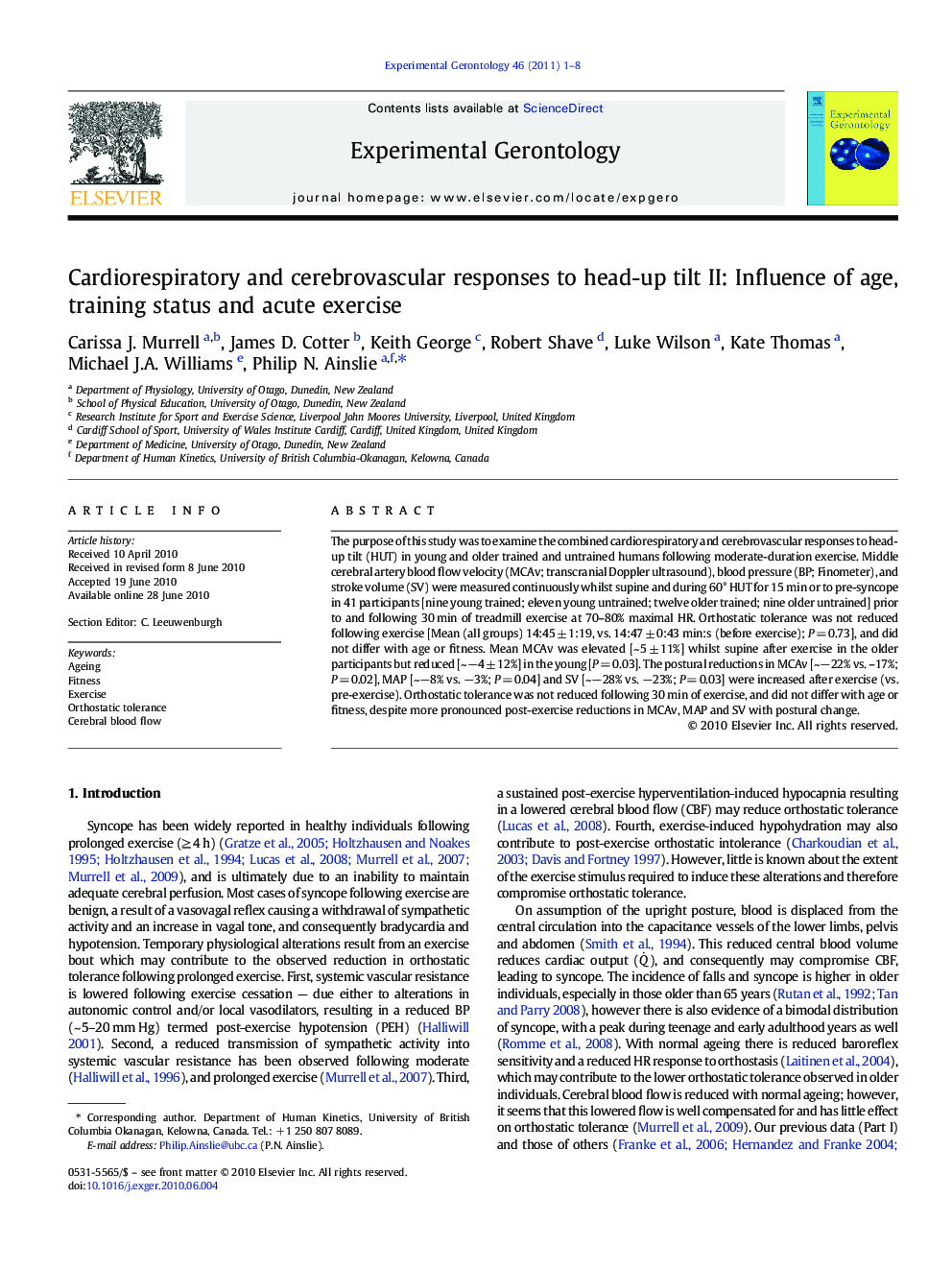| Article ID | Journal | Published Year | Pages | File Type |
|---|---|---|---|---|
| 1906419 | Experimental Gerontology | 2011 | 8 Pages |
The purpose of this study was to examine the combined cardiorespiratory and cerebrovascular responses to head-up tilt (HUT) in young and older trained and untrained humans following moderate-duration exercise. Middle cerebral artery blood flow velocity (MCAv; transcranial Doppler ultrasound), blood pressure (BP; Finometer), and stroke volume (SV) were measured continuously whilst supine and during 60° HUT for 15 min or to pre-syncope in 41 participants [nine young trained; eleven young untrained; twelve older trained; nine older untrained] prior to and following 30 min of treadmill exercise at 70–80% maximal HR. Orthostatic tolerance was not reduced following exercise [Mean (all groups) 14:45 ± 1:19, vs. 14:47 ± 0:43 min:s (before exercise); P = 0.73], and did not differ with age or fitness. Mean MCAv was elevated [~ 5 ± 11%] whilst supine after exercise in the older participants but reduced [~−4 ± 12%] in the young [P = 0.03]. The postural reductions in MCAv [~−22% vs. –17%; P = 0.02], MAP [~−8% vs. −3%; P = 0.04] and SV [~−28% vs. −23%; P = 0.03] were increased after exercise (vs. pre-exercise). Orthostatic tolerance was not reduced following 30 min of exercise, and did not differ with age or fitness, despite more pronounced post-exercise reductions in MCAv, MAP and SV with postural change.
Research highlights► Orthostatic tolerance is unaffected by age and by fitness both at rest and following 30 min of moderate-intensity exercise. ► The postural reductions in MCAv, MAP and SV with HUT are exaggerated following 30 min of exercise. ► Older individuals exhibited supine elevations in MCAv following 30 min of exercise, not observed in the young. ► The impairments in cardiovascular control responsible for syncope following prolonged exercise may begin early and increase with exercise duration.
